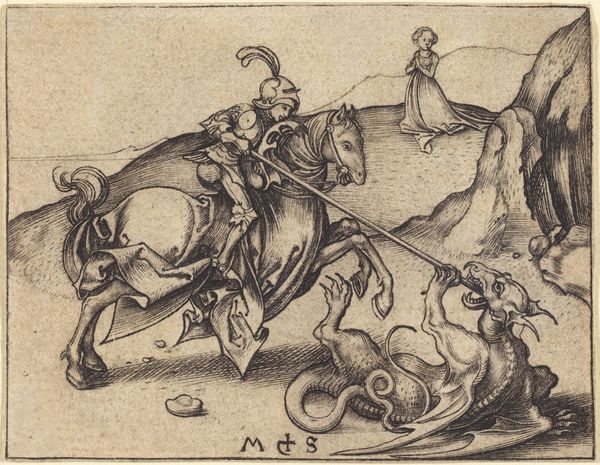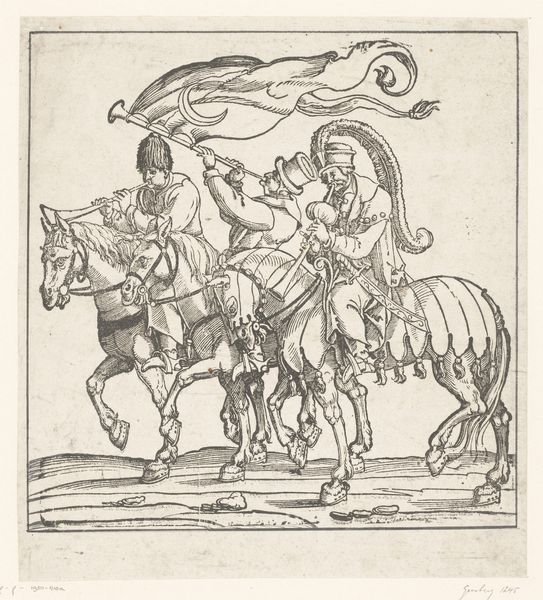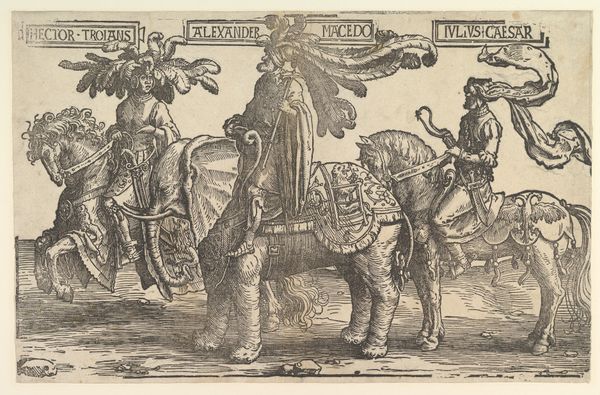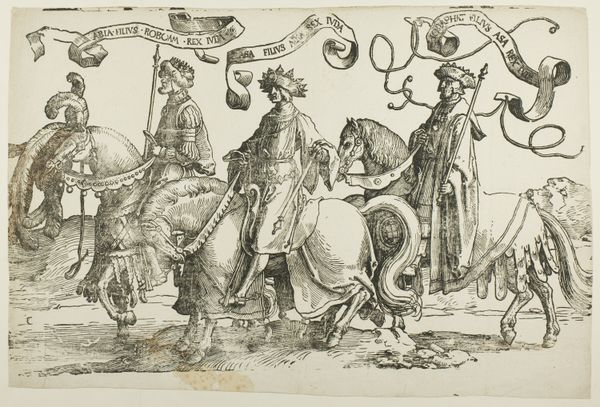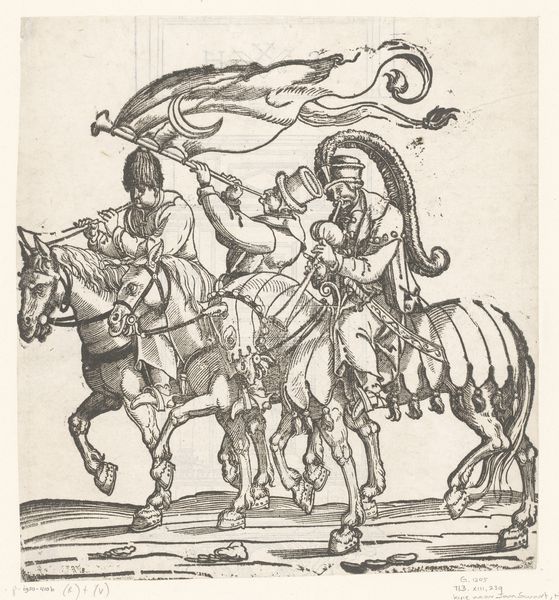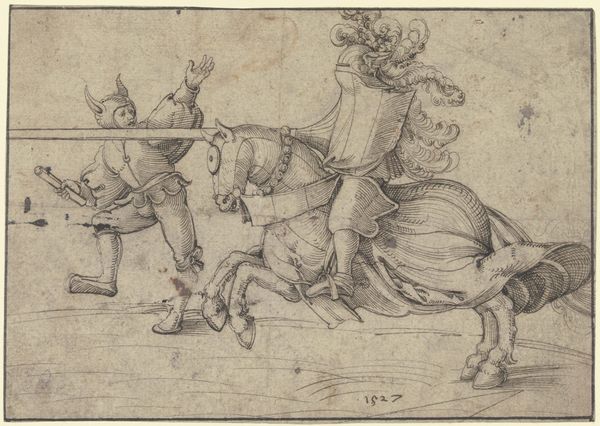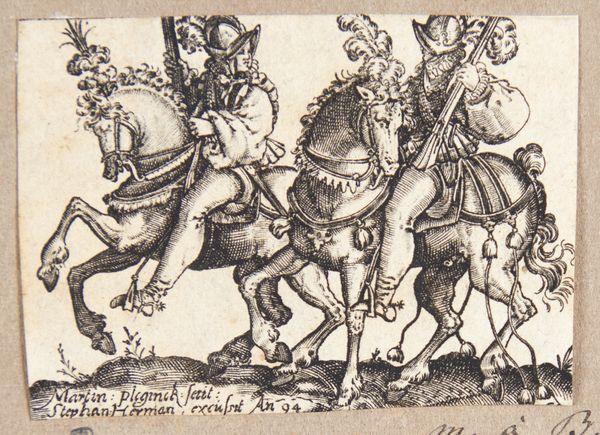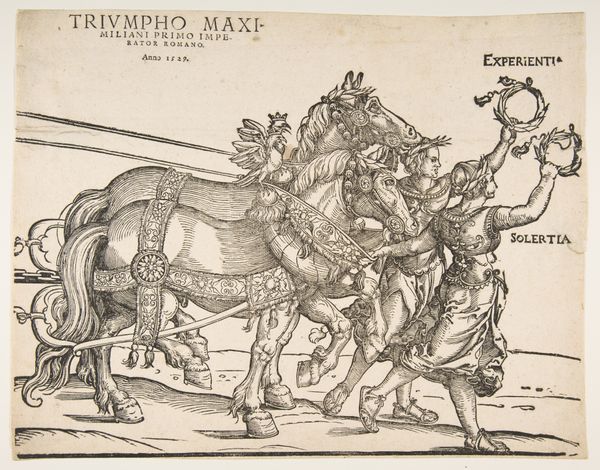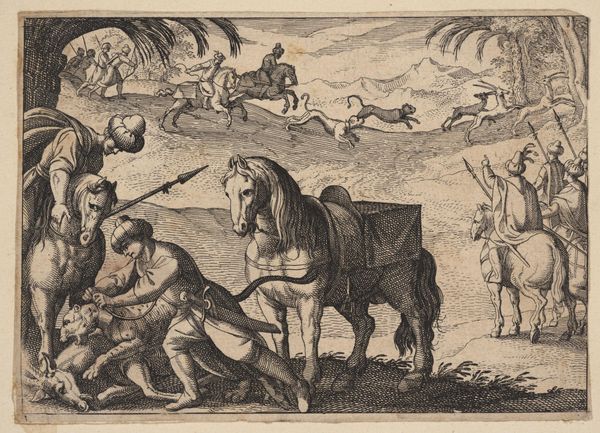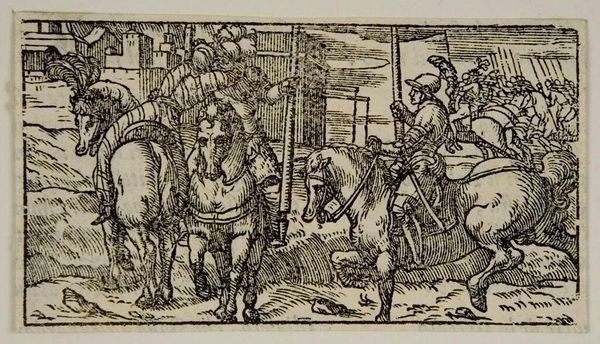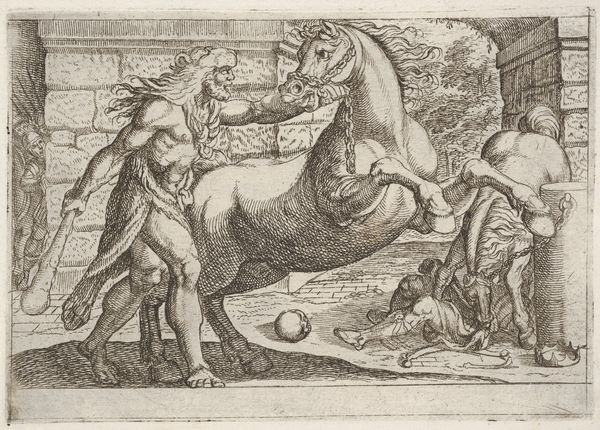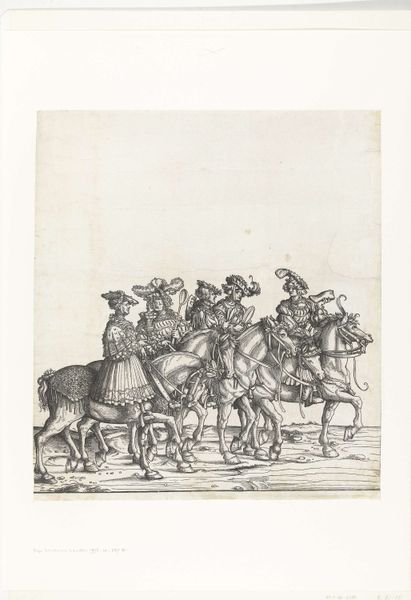
drawing, print, woodcut, engraving
#
drawing
#
ink drawing
#
allegory
# print
#
pen illustration
#
pen sketch
#
figuration
#
11_renaissance
#
woodcut
#
horse
#
line
#
history-painting
#
northern-renaissance
#
engraving
Dimensions: sheet: 8 3/8 x 10 1/16 in. (21.3 x 25.6 cm)
Copyright: Public Domain
Curator: Oh, wow. The sheer, graphic confidence of it hits you right away, doesn’t it? Look at the muscularity of the horses, and the almost aggressively controlled lines everywhere! Editor: Indeed. We are looking at the third sheet of Albrecht Dürer’s "The Great Triumphal Car," created between 1485 and 1600. As a woodcut and engraving print, currently residing at The Metropolitan Museum of Art. It's a study in power, both visually and symbolically. Curator: "Power" is the word! The figures—the horses straining, the goddess so sure-footed—everything shouts forward motion. But what *is* this car triumphing *over*, do you think? Or is it celebrating a victory already won? Editor: It functions as historical allegory. Designed for Emperor Maximilian I, who sought to elevate his lineage and political achievements, the triumphal car, with all its meticulously rendered detail, reinforces a narrative of imperial authority. This imagery strategically promotes Maximilian's political ambitions within a complex European landscape, and his reign, solidifying Habsburg power. Curator: It makes you wonder about the human ego that inspired all that painstaking detail, and if the power was ever wielded in ways that are equitable? I feel as if you’d have to feel some degree of discomfort at its historical implications in order to fully appreciate Dürer’s skill and the Northern Renaissance context. It also reads rather masculine in its emphasis. Editor: Your point underscores its complexities. While we marvel at the technical brilliance of the piece, critical reflection acknowledges its role in the promotion of specific historical narratives of power. Understanding the function of this image is integral to critically engage art history. Curator: Yes, but the skill involved, from my point of view, elevates this print from a piece of imperial propaganda to a work of undeniable artistic integrity that is simultaneously thought provoking. Editor: And in considering artwork as a visual artifact and cultural marker that is bound within the nuances of socio-historical narratives is why this piece continues to spark conversation.
Comments
No comments
Be the first to comment and join the conversation on the ultimate creative platform.
